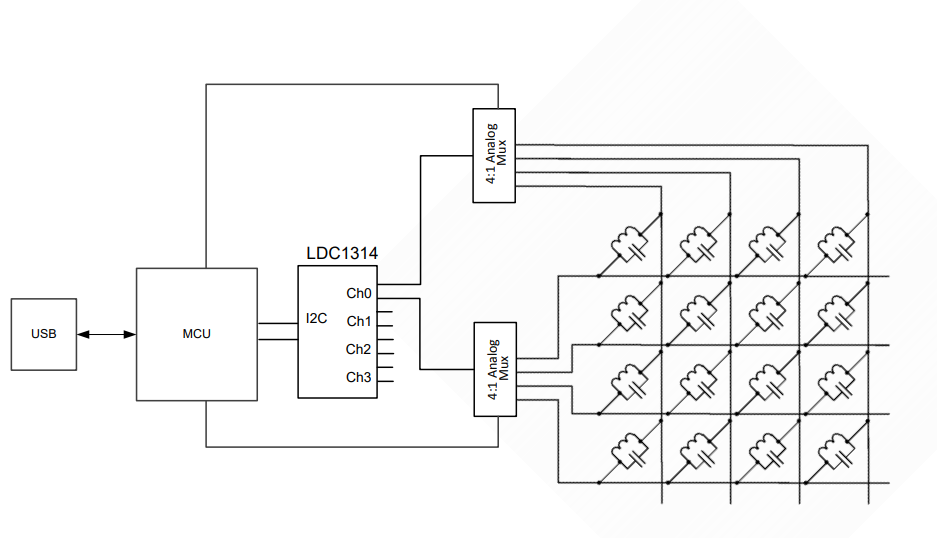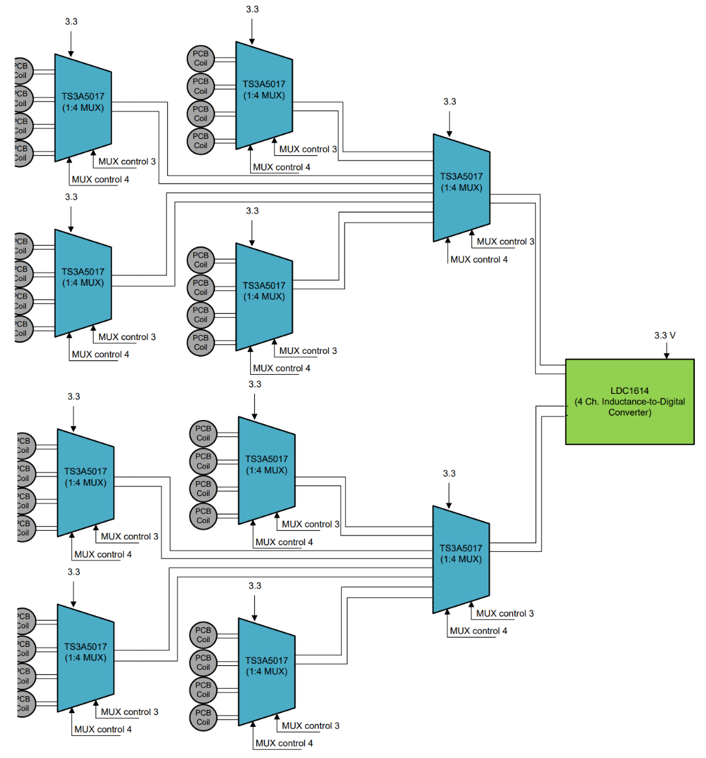Other Parts Discussed in Thread: LDC1612, TMUX1208, MUX36D08, TMUX1308, MUX507, TMUX1209, SN74CBT3251, SN74CBTLV3251, TMUX1308-Q1
analog multiplexer for LDC1612 configuration
We want to use the LDC1612 from TI and connect it to 16 different coils. We found an example projects from TI [1] which does a very similar thing. We applied the schematics of this example project, but noticed that the signal gets a lot of noise from parasitic capacitances because of the matrix configuration as displayed [2]. We worked on a solution to improve the signal-to-noise ratio and came up with the following circuit [3]. This circuit connects only a single coil to the LDC1612 at a time and removes the issue of parasitic capacitances. This circuit allows us to connect 32 coils to a single LDC1612, but as you can see, it requires a lot of multiplexers.
We would like to lower the cost of the design and preferrably use at most two dual 1:8 multiplexers to connect a total of 16 coils to a single LDC1612 chip. Could you help guide us in finding the best possible analog multiplexers for our needs?
Below you will find the images and sources mentioned in this e-mail.
I hope this e-mail properly displays our needs. We would greatly appreciate your help and if you have any questions, please let us know and we will do our best to provide all required information.
Best regards,
[1]: http://www.ti.com/lit/ug/tidu954a/tidu954a.pdf
[2] image:
[3] image:




